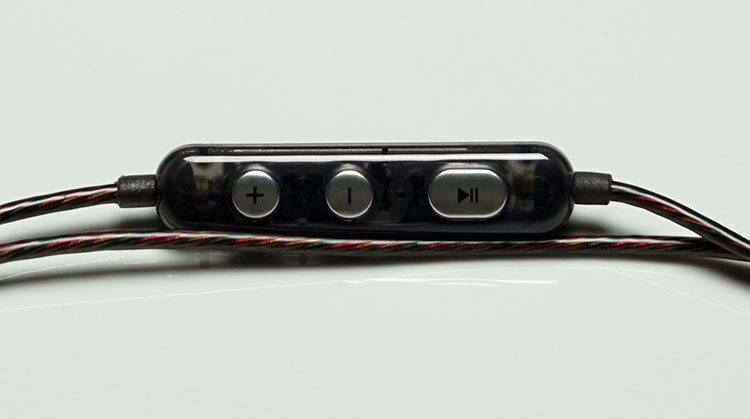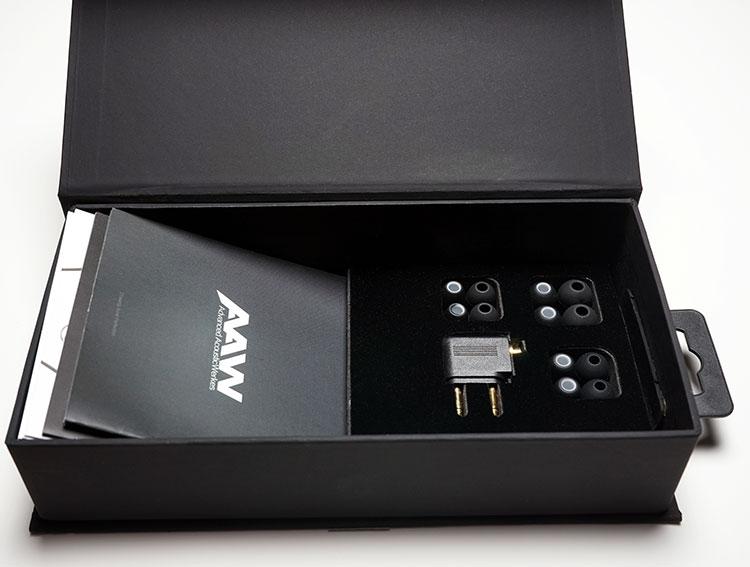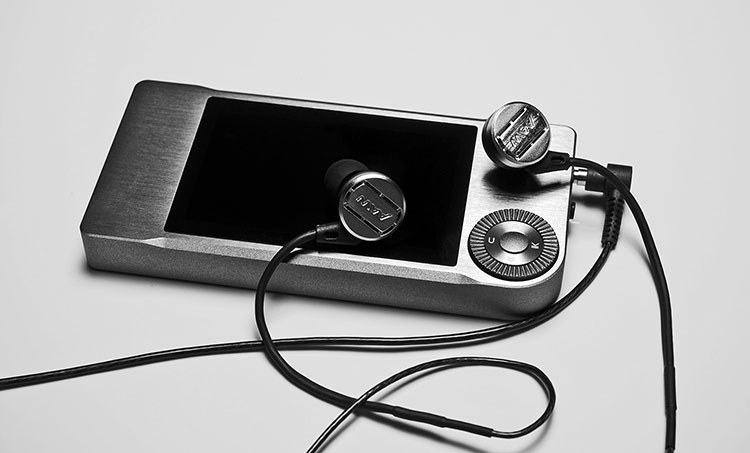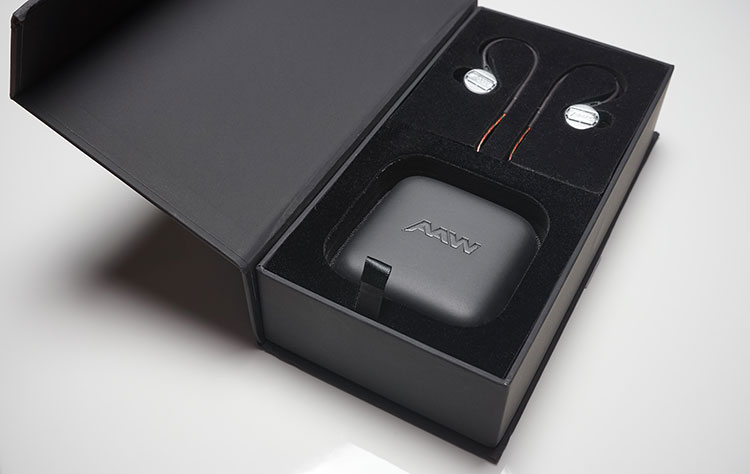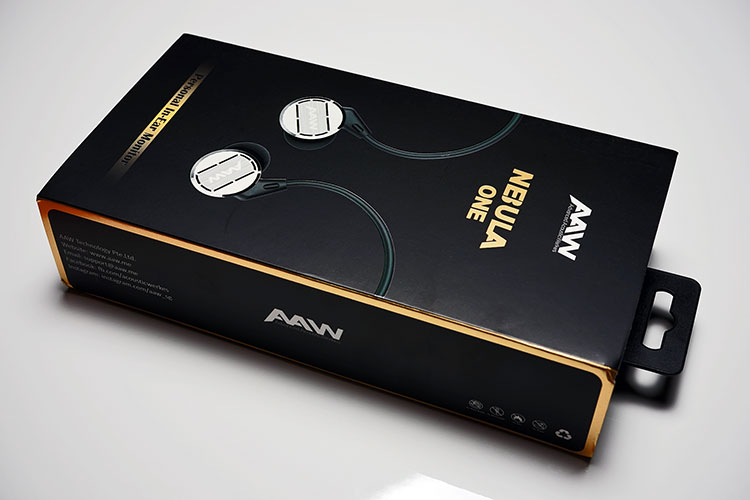The AAW Nebula One is a single ultra-thin layer titanium-plated dynamic driver IEM pitched for first-time upgraders. It is priced at SG$188.
Disclaimer: The AAW Nebula One sent to us is a sample in exchange for our honest opinion. We thank the teams at AAW for giving us this opportunity.
To read more about AAW (Advanced AcousticWerkes) products reviewed on Headfonics click here.
Note, this review follows our new scoring guidelines for 2020 which you can read up on here.
Advanced AcousticWerkes, (AAW) are not known for universal IEMS. In fact, I was speaking to them about their W500AR Morph customs when the guys said: “hey, try the Nebula One in the meantime”. “Sorry with the what now?”…”
Yes, the Nebula One our first universal IEM”. Cool, sure thing, send it over, it looks promising. Coming from guys who build customs it did not take much to convince me to review this.
Even more interesting is that the Nebula One does not cost the earth with an MSRP of SG$188 (Singapore dollars) and as of right now they are doing a sale on it for SG$149 which is around $110 US so a pretty good deal and nothing that would break the bank. It is just on the cusp of what I would call a budget IEM.
What Is The Pitch?
On the spec sheet, the Nebula One is actually packing some expensive tech for that $110 price tag, to be honest. An ultra-thin layer titanium diaphragm with Neodymium drivers is not a cheap bill of materials to throw into an IEM.
Not only that AAW are claiming that the drivers are developed in-house (10mm) which would add to the overall project costs for sure. In addition, they have thrown in a lightweight low impedance cable constructed of type 2 round Litz. I do not normally see Litz cable being a stock cable at this price range.
The Nebula One also comes with an inline mic and playback module which will doubtlessly appeal to smartphone users.
In addition, they have thrown in a lightweight low impedance cable constructed of type 2 round Litz. I do not normally see Litz cable being a stock cable at this price range. The Nebula One also comes with an inline mic and playback module which will doubtlessly appeal to smartphone users.
The Nebula One really does look more expensive than it is, the tech also makes it sound more expensive than it really is. Given the track record of AAW you have to believe this is a strong pitch for those wanting a good audiophile-level listening experience but are either not prepared to spend a whole lot, or only wish to use it out of smartphones and some low to mid-fi DAPs.
Design
If you have seen or used the much more expensive Dita series of headphones, then the shape and build of the Nebula One will look very familiar and that is a very good thing indeed at this price point. The Nebula One opts for that rounder flatter disc type shape of the Dita series with two distinct halves comprising the overall housing.
The front half is a silver metal construction (presumably aluminum) with a central plate brandishing the AAW logo. The logo plate has a thin 1mm air trench around it, presumably for venting purposes, and is held in place by 6 small strategically placed metal stems.
The second half of the housing to the rear is a hard black plastic molded finish and includes the angled nozzle as a single piece cut. The Nozzle is a relatively short tube and is finished with a silver grill filter at the tip of the bore. Put together they have a contrast of colors but it is stylish enough not to look garish or cheap.
No specs have been supplied regarding weight but I would hazard a guess at around 20g so heavier than the plastics of Oriveti or Westone but lighter than the all-metal RHA T series.
AAW has gone for a hard plastic protector for the cable fitting so it is designed to be worn over the ear only. The hard plastic stem terminates into the memory hooks so whilst there is no rubberized strain relief it does look pretty solid and durable from breaking.
Fit & Seal
The fit is actually quite comfortable with the Nebula One. The form factor is spot on for quick insertion without having to move it around to get a comfortable fit. The memory hooks are firm but flexible and easily shaped around your ear.
The nozzle is a little shallow but your trade-off is that it is a little more relaxed in its fit, thus comfort levels are high. The seal is average to good with a few areas holding it back slightly. The first is the large venting system on the front metal plate which does allow a certain amount of leakage.
The second is that shallow nozzle fit which, combined with the regular single bore tips, does ok but not amazing. Swapping tips to longer foams or triple flange should increase the seal but it might change up the tonality as a result.
Personally, I found the comfort level to balance out the slight lack of seal but I get a feeling once out the door, and in noisy environments, I might want to change out the stock tips.
Cable
The type 2 1.2m Litz OFC cable AAW has used is actually quite thin and lightweight but it seems durable, suffers from zero memory retention, and doesn’t seem to have that flyaway quality other cables at this price tend to have.
It also has a semi-transparent TPE material coating so if you stare hard enough you can see the twisting Litz wiring underneath and gives the overall color tone a sort of dark wine color that I personally find quite attractive.
The cable itself is terminated with a right-angle 3.5mm four-pole gold plated jack with excellent rubberized strain relief.
The four-pole is designed primarily for the accompanying inline mic and playback module housed above the y-split on the right side. It is one of the nicer looking inline remotes, certainly not cheap with good labeling.
It is designed to work with both Android and iOS products and under test conditions, playback control works fine on a Sony Ultra Z and Android platforms such as the FiiO X7, Cayin i5, and the Sony ZX2. Call quality on the Z Ultra was just fine also using the mic.
Accessories & Packaging
AAW has put together a pretty good value package with regards to accessories and something I would expect to see in packages worth up to $300. This includes:
- Tips: Flex 3 pairs, Ultra-Flex 3 pairs
- AAW carrying pouch
- Flight adapter
- 1/4 inch adaptor
- User manual
- Warranty card
The presentation retail box is stylish and contoured to display the accessories rather than being slipped into a small plastic bag. The semi-hard pillbox style zipped pouch has plenty of space for carrying the Nebula One with tips and adapters fitting easily into a nylon mesh holder in the roof of the case.
The tip selection itself is good though I would have liked to have seen one set of foams or a set of flanged tips just as an option for the shallow nozzle of the Nebula One.
Nebula One Sound Impressions
Tonality
The Nebula One has a warm-to-neutral tonal presentation with a forward sounding elevated bass response, a neutral and clean midrange with a clear vocal presence, and topping it off with a slightly laid back treble response.
It’s a lively “big presentation”, very spacious sounding indeed and with a definite musical focus but enough audiophile sensibilities tuned it to prevent it from sounding too mushy or soft.
The detail and clarity are actually pretty good on the Nebula One especially in the lower midrange though I detect a slightly glassy metallic flavor creeping into the upper mids and lower treble especially with cymbal work which makes it a little thin sounding and messes with the timbre slightly.
Otherwise, I am impressed with the snappiness of the Nebula One which proves itself to be tonally adept and quick enough to work on a wide range of genres including rock, pop, and EDM.
Bass
Bass performance on the Nebula One is a strength for me even though it’s perhaps the most dominant aspect of the frequency response.
Sub to mid-bass on the Nebula One is north of neutral with a slightly warm sheen though mid to upper bass is not overly emphasized meaning there is only a tiny bit of bleed into the midrange. Bass decay on the Nebula One’s dynamic driver is relatively quick as well-meaning it certainly has the chops and control to stop it falling over itself once things get speedy.
This is a heavy but controlled sounding bass response compared to a lot of budget IEM’s out there at this price range and yet it doesn’t lose any of that natural sound that is such a strength for dynamic drivers in general.
It actually lends itself very well to high bpm trance and general EDM. Relevant artists such as Paul Van Dyk and Dash Berlin sounded clean and clear with the Nebula One bass presentation.
Mids
The midrange on the Nebula One is relatively neutral in comparison to the lively bass response though the lower midrange has a little more body sounding than the thinner sounding upper midrange.
Clarity and detail are above average at this price point and it does lack congestion sounding spacious with good instrumental separation and for the most part an accurate and rich sounding timbre.
Vocal presence has a slightly forward presence with a good body and definition. Male vocals sound natural and realistic though not quite as forward sounding as higher-pitched female vocals.
On the flipside, higher-pitched female vocals start taking on that slightly more brittle sound that creeps into the upper midrange and
Vocal presence has a slightly forward presence with a good body and definition. Male vocals sound natural and realistic though not quite as forward sounding as higher-pitched female vocals. On the flipside higher-pitched female vocals start taking on that slightly more brittle sound that creeps into the upper midrange/lower treble of the Nebula One.
Treble
Treble on the Nebula One is a bit of a mixed experience. On the one hand, it isn’t overly harsh, forward, or to too strident but on the other hand, it can sound a little too brittle and thin, especially in the lower treble response. Cymbal and percussion work doesn’t have a really natural timbre though I would not describe them as splashy or peaky sounding, just lacking in body.
Treble extension is not too bad on the Nebula One, it will never sound shelved down or lacking in air and it does sound reasonably articulate and resolving. It is the type of ethereal laid back treble that works nicely with chill/trance, ambient music, acoustic guitar work but less so with, say, energetic operatic styles of rock.
Synergy
Power
Rating
The Nebula One has 16-ohm and 100dB SPL rating so it is relatively easy to drive and remains fairly distortion-free on decent portable amps (DAP/DAC or analog). I am actually surprised that the driver has a 100dB rating though which is right on the edge for decent efficiency at a 16-ohm rating (RHA T series is somewhat lower though).
I was sort of expecting this to come in at around 107dB above but then again it is a blissfully noise free black background, even on the Shozy Alien Gold Edition, which could well be one of the goals AAW had when designing the Nebula One.
Sources & Amps
Having said all that, it drove very well indeed from my weak-ass BB Passport amp and sounded even more dynamic and resolving with a better DAC such as the X7 combined with the AM3 amp.
Volume steps on the low gain with the X7/AM3 were a more than healthy 60-65 steps depending on the recording which is a good bit higher than efficient BA designs such as the Oriveti Primacy and CA Jupiter which came in almost 15 steps lower.
Tonal
Shozy Alien
The Nebula One is a tonally agnostic IEM to pair, meaning it goes pretty well with most sources though a superior amp will produce a better response. Anything basically that doesn’t have an inherently sharp or thin signature to overwork the thinnish lower treble response and distract unnecessarily gets my vote.
DAPs such as the Shozy Alien tended to bring out the staging qualities of the Nebula One and keep everything very smooth with little effort required to drive the Nebula throughout a noise-free experience.
Cayin N5/FiiO X7/M3
The Cayin N5 gave a more energetic musical performance and despite its sharp attack stayed relatively well controlled with the Nebula One.
If you are on a budget the FiiO M3 was an excellent, full-blooded, and very musical pairing with the Nebula One. Not as resolving as say the wonderful new Cayin i5 or as smooth as the FiiO AM3 but certainly very capable so long as you do not push the volume up too high.
Chord Mojo
I have to give a special mention to the Chord Mojo/AAW Nebula One pairing. I felt out of all tested this was the best pairing of the lot for getting the most natural-sounding lower treble response compared to the DAPs in comparison.
That may be something to do with the power rating or simply due to the way the Mojo adds some weight to the sound in general but it is fairly forgiving in the top end without any lost detail. It is a special little DAC/Amp and paired with the Nebula One it shows its class easily.
Select Comparisons
Shozy Zero
Price & Build Variations
Priced at $59 the Zero is a veritable woody bargain in comparison to most budget IEMs with even the Nebula One trailing in its fiscal wake.
Packaging and accessories are a touch more spartan though with the Zero in comparison to the Nebula One with only three tips compared to six and no airline accessory. The Zero also lacks any inline controls for smartphones, (Android and iOS), playback, and taking calls.
The Zero cable is more microphonic and memory retentive than the Nebula One’s very well constructed Litz 2 OFC cable. The Zero woody housing is really well made with some nice Rosewood and CNC housing materials, probably the best in class for wood-based IEMs.
However, Nebula One’s metal housing feels a touch more premium and eye-catching. The Nebula One is a little heavier though both are excellent on fit and seal with the Zero’s less porous venting system getting the edge for me on the seal.
Power Variations
Power-wise both sit on the less efficient side of things with the Nebula One crawling in at 100dB and the Zero even lower at 94dB.
Both are fairly easy to drive, but the Zero is just that bit less efficient than the Nebula One in comparison by around 3-4 digital steps on sources such as the Cayin i5, FiiO X7, and 1-2 steps on the Shozy Alien.
The good news is both suffer from far less hiss and noise from sources and amps than more efficient modern BA designs such as the Primacy hybrid and the CA series Orion upwards.
Tonal Variations
Tonally it is night and day between these two with the Zero having a much warmer presentation than the cooler more neutral Nebula One. They do share some common aspects of emphasis.
Both have heavy-hitting bass responses but the Zero is the warmer and softer presentation overall with a longer decay and more elevation in the upper bass range than the Nebula One. The Nebula One sub-bass performance is stronger and tighter than the Zero. On this aspect, I do prefer the Nebula One bass performance.
The Nebula One suffers from less bass bleed than the Zero in its midrange performance but is decidedly more neutral sounding with a timbre that is not quite as natural when it comes to vocals. The Zero vocals are more confident and natural sounding for female ranges than the Nebula which is a bit off and better performing with male vocals.
Treble performance on the Nebula One is more forward sounding, cleaner, and more articulate but it has that brittle lower treble which the Zero doesn’t suffer from. The Zero’s lower treble has decent energy and sounds more natural but it doesn’t have the level of clarity or extension that the Nebula One is capable of.
UBSOUND Orchestra
Price & Build Comparison
Our cheapest IEM reviewed to date at just $24.99 and it does show in terms of quality of materials used with a cheaper single plastic mold in a Westone style form factor.
Again the quality of the cable on the Nebula One shines through with lower microphonics and memory retention than the UBSOUND Orchestra cable. Though both have inline remotes/mics on their cables the Nebula One’s cable is higher quality construction with better labeling.
Both have excellent fits though and once again the Achilles heel of the Nebula One makes its presence known with a lower level of seal than the Orchestra due to that large venting system and shorter nozzle.
Efficiency Comparison
The Orchestra is significantly more efficient than the Nebula One at 115dB though both are 16-ohm IEMs. Both will drive fairly well from just about any source and actually both do tighten up a little with quality amps. The Orchestra sounds much better with portable amps such as the ALO Audio RX v2 amp.
Tonal Comparison
Tonally this is a very big difference between the two but given the price disparity that should not be a surprise. The Nebula One is the cleaner more resolving IEM with the Orchestra showing a very clear cut V-Shape to the milder dip in the Nebula One.
The Nebula One’s bass response is tighter with a shorter decay and better extension with an excellent sub-bass response in comparison to the softer more voluminous mid-bass hump of the Orchestra.
The midrange is more spacious and more forward sounding than the Orchestra and also more natural sounding. Treble is also more articulate, airy, and with a better extension on the Nebula One. The Orchestra simply doesn’t sound anywhere near as spacious but in return, it avoids sounding brittle in the lower treble which the Nebula One can suffer from.
Fidue A73
Price & Build Comparison
The A73 is a single dynamic single BA hybrid design coming in around $150 so only about $40 more than the current price of the Nebula One.
Side by side with the Nebula One it is a competitive offering with similar packaging including hard case, a wide range of tips, and a lapel clip though missing the airline adapter that the Nebula one carries.
The A73s tips though do include a double flange and have a bit more variety to them than the Nebula One which, given both have relatively short nozzles and average isolation would be a bonus for AAW to include. Build wise the A73 is cheaper looking with a plastic design based on the premium A83 compared to the more premium metal looks of the Nebula One.
Efficiency Comparison
The A73 also uses a 10mm driver though not of the titanium variety and is a slightly more efficient IEM than the Nebula one coming in at 107dB compared to 100dB. It does not need quite as much juice as the Nebula One to drive, perhaps 2-3 digital steps less on most DAPs or sources.
Tonal Comparison
Tonally they share the same warm to neutral response only the A73 attack is slightly softer especially in the bass response where I felt the Nebula One tuning was tighter and more responsive with a slightly faster decay than the more elevated but warmer dynamic driver of the A73. The A73’s BA midrange is just a little cleaner with a touch more detail and clarity than the Nebula One.
Both have fairly well extended treble responses with the A73s treble edging it, sounding a bit fuller and airier. Both have slight issues in the lower treble response but in slightly different ways.
The A73 suffers from more sibilance than the Nebula One and has a slashy longish decay that tends to peak in and around 7k whereas the Nebula one is less peaky but thinner sounding so doesn’t quite have that natural sound. The soundstage on both is good but the A73 has a bit more width and slightly superior imaging than the Nebula One.
Our Verdict
The Nebula One is actually a very good value IEM for the price. On initial testing, I wasn’t wholly convinced but after around 50 hours or so tonally I thought it was clear, clean with an excellent bass response for a dynamic driver at this price point, and offering a warm to neutral noise-free experience and perfect for modern EDM particularly ambient works.
It has a cooler signature than woodies with a slightly metallic flavor in the upper mids and slightly brittle in the lower treble but I think I can forgive that given how well the bass performs.
Nothing mushy or bloated sounding which is great. It will drive fairly well off most sources actually but I did enjoy the Mojo and the Cayin i5 the best out of the DAPs I tried with the FiiO M3 being the budget DAP of choice.
I do believe there is a Nebula 2 in the works so I would be interested to see how it builds on the sounds and looks of the first version but for now, at just over $100 US I would place the Nebula One fairly high up as an IEM EDM lovers should take a look at.
Nebula One Technical Specifications
- Proprietary titanium-plated micro driver
- Frequency Range: 10Hz-23000Hz
- Sensitivity: 100db SPL @ 1mW
- Input Power: 3mW
- Cable Length: 1.2m
- Android/Apple dual-mode inline remote control



